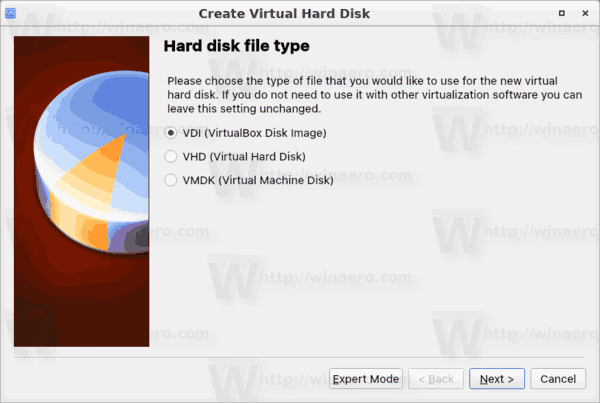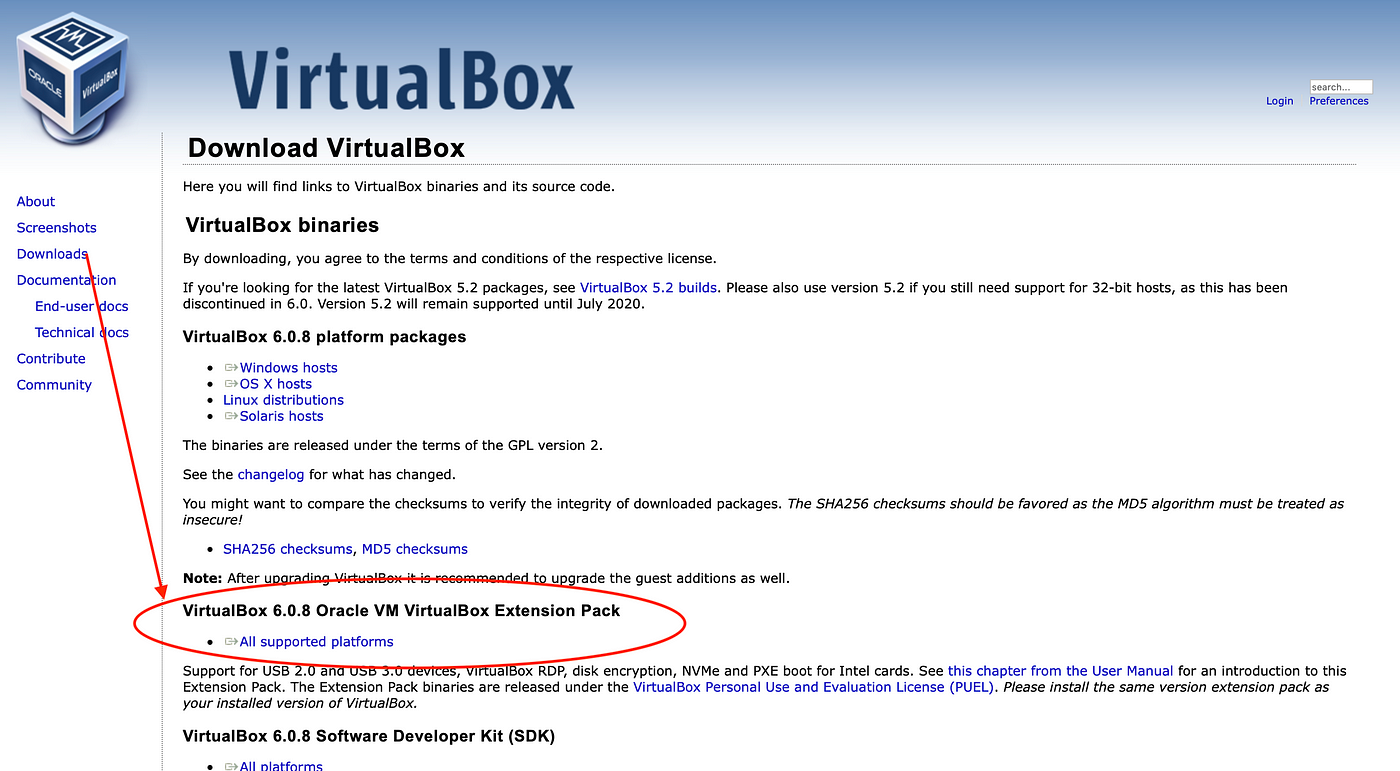Portable-VirtualBox is a free and open source software tool that lets you run any operating system from a usb stick without separate installation.
Installation instructions
Virtualbox 32bit free download - Adobe Captivate (32-bit), 32bit FTP, WinRAR (32-bit), and many more programs. VirtualBox is free for all users. Operating System: Windows XP/Vista/7/8. Can run on both a 32-bit and 64-bit OS. File Size: 108.56 MBs.
- Download and run Portable-VirtualBox_v5.1.22-Starter_v6.4.10-Win_all.exe.
- Choose a folder to extract to.
- Go to the folder and run Portable-VirtualBox.exe. You'll see a window like the one below:
- If you have already downloaded the installer for VirtualBox from www.virtualbox.org click search and navigate to the file. If not, click 'Download The Installation Files of VirtualBox.' Portable-VirtualBox will show you the download's progress.
- Once the installer is download, check the boxes that are appropriate and click OK. Portable-VirtualBox will extract the files it needs from the VirtualBox installer, and restart itself afterward if you select the last checkbox.
Optional configuration
Portable-VirtualBox makes default settings automatically. You can modify them by pressing CTRL-5 or opening the tray menu while Portable-VirtualBox is running. Either action will bring up the configuration GUI below. The Hokey-Settings tab is shown open in the image below:


Features
- Splash screen to start and end
- Configurable Home Directory
- Launch the VirtualBox GUI or directly launch a VM
- Configure the hotkeys for managing your virtual machine
- Configure USB and network support
- Choose language for GUI
- Saves settings in editable *.ini-files
- Can automatically check for VirtualBox updates
- All absolute paths in the VirtualBox.xml are replaced automatically by relative paths
- Checks to make sure VirtualBox files exist
Install files signature
All install files after launcher version 6.4.10 is digitally signed. Signer is “Open Source Developer, Runar Buvik”, certificate is issued by Certum Level III CA. This is temporarily disabled until a new certificate arrives in the mail.
Note

VirtualBox needs several kernel drivers installed and needs to start several services: if the drivers and services are not already installed you'll need administrator rights to run Portable-VirtualBox.
When Portable-VirtualBox starts, it checks to see if the drivers are installed. If they are not it will install them before running VirtualBox and will remove them afterward. Similarly, Portable-VirtualBox checks to see if the services are running. If not, it will start them and then stop them when it exits.
If you want to save space you can remove the language files for other languages than your own. That can save you nearly 10 MB. They are in the nls directory.
You can also delete the documentation saving nearly 5 MB. You will find it in the doc directory.
When the VM is running you must press the 'Host-Key' (initially configured as the right CTRL-Key) to be able to use the other Hotkeys since otherwise the VM will have the focus.
Network support
- To download of Portable-VirtualBox
- Unpack from Portable-VirtualBox
- Start from Portable-VirtualBox
- Attitudes open (Tray --> attitudes, CTRL+5) --> rider Network (Tab) --> VirtualBox with network support start --> memory (save)
- Terminate from Portable-VirtualBox
- Start from Portable-VirtualBox
- Driver installation agree
- Wait
- Selection of a VM and the network map to host interfaces stop
- Attitudes make
- FINISHED
Languages of Launcher
English, German, Portuguese, Spanish, French, Italian, Chinese, Japanese, Polish, Russian and Ukrainian.
Important
None of the files that come from VirtualBox are modified or otherwise changed.
Portable-VirtualBox downloads the VirtualBox installer which contains all of the VirtualBox files and drivers. Portable-VirtualBox unpacks the files and stores them in subdirectories . Portable-Virtualbox can also compress them in order to save space.
[adsense:client=ca-pub-123456,slot=123456,type_ad=head]
There are a lot of practical reasons to set up an OS like Windows 10 in a VM rather than using it as a native installation. If you have to deal with files you can’t trust, need to test multiple OS installations on the same system, or need access to the operating system without wanting to use it as a daily driver, using it a VM offers access to its features and capabilities without worrying about needing to keep the OS installation around long-term. Luckily, setting up Windows 10 in a VM isn’t particularly difficult.
Note: While this guide uses VirtualBox, it is not the only free VM software available. VMWare Workstation Player is another option. On Mac, there are solutions like VMWare Fusion and Parallels, but, VMWare Fusion has no near-term plans to support x86 architecture VMs on M1 solutions. Parallels has explicitly shipped software that does support x86 VMs on M1 systems.VMWare has announced that Linux, not Windows, is its priority as far as Mac support is concerned.
VirtualBox Installation
1. Download the Windows 10 ISO
First off, head over to the Windows 10 download page. If you are a Windows user, MS will prompt you to download the Media Creation Tool before allowing you to download an OS image. You can use this tool to create an ISO file locally, or you can follow these additional instructions if you want to download the ISO manually without being forced to grab the tool first.
2. Create a new virtual machine
Virtual Boxes For Windows 10
Go to the VirtualBox website, and download the latest version of Oracle’s free, open source software. Go through the installation process, and then launch the application. Press the “New” button, and name your virtual machine. Make sure your “Type” is set to “Microsoft Windows,” and your “Version” is set to “Windows 10.” Just make sure you match the x64 version with a 64-bit VM, and the x86 version with a 32-bit VM.
3. Allocate RAM

Now, you need to decide how much RAM you want to allocate for this VM. For the x86 version, you’ll need at least 1GB of RAM. For the x64 version, you’ll need 2GB. I have 16GB of RAM in my desktop, so I decided that 4GB was right for my configuration. Whatever you decide, just make sure you stay in the green. If you allocate too much RAM, you’ll end up with serious performance issues.
4. Create a virtual drive
Next, you need to create a virtual drive. Microsoft says that 16GB is the minimum space needed for the 32-bit version, but 20GB is required for the 64-bit version. I decided on a 50GB virtual drive on my desktop, but feel free to make it as large as you need. Just be sure that you have enough space on your actual hard drive to handle the size of your virtual drive. Depending on what you intend to do with the OS, you may want to allocate more or less storage. Applications installed to a VM should be assumed to require the same amount of “real” storage that their standard installations would.
5. Locate the Windows 10 ISO
Now, go into the settings for this virtual machine, and navigate to the “Storage” tab. Click the disc icon with a green plus next to “Controller: SATA.” Click “Choose disk,” and then locate the Windows 10 ISO you downloaded earlier.
6. Configure video settings
Before you jump in and start installing Windows 10, move over to the “Display” tab. You can configure how much video memory you’re willing to allocate to the virtual machine, but make sure you stay in the green. You can also toggle on 3D acceleration if you like.
7. Launch the installer
With all of that setup finished, press the “Start” button in VirtualBox, and begin the Windows 10 installation process. Follow the instructions on the screen, and you’re well on your way.
8. Install VirtualBox guest additions
Once you’re at the Windows 10 desktop, you’ll need to install all of the proper drivers for VirtualBox. In the VirtualBox UI, go to “Devices,” and then select “Insert Guest Additions CD image.” Navigate to that disc image in Windows Explorer, and run the installer. Once you’ve gone through the entire process, you’ll need to reboot the VM.
Windows 10 32-bit Requirements
9. You’re ready to rock
Back at the desktop, you can finally use full-screen mode at the proper resolution. In the VirtualBox menu, go to “View,” and select “Switch to Fullscreen.” For the most part, this is now the same experience you’d have running it natively. Enjoy yourself, and feel free to poke around all the new features.
Virtualbox Windows 10 32 Bit Download Windows 7 Free
Now Read: